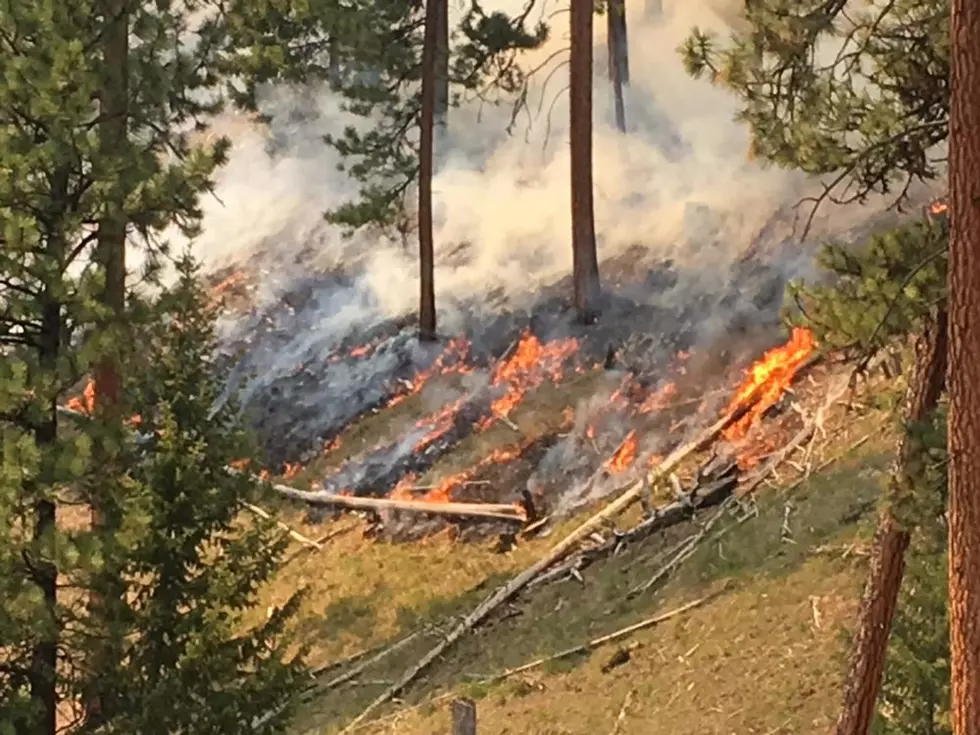
Viewpoint: Challenge to massive clearcut in wildlife corridor
Mike Garrity
One might think after losing a number of lawsuits in a row for blatant violations of the law the Forest Service might think twice about going forward with illegal logging, burning, and road-building projects. But no, this rogue agency plows ahead to serve the timber industry and denude what’s left of the old growth forests in the Northern Rockies.
So once again, the Alliance for the Wild Rockies and its co-plaintiff Native Ecosystems Council have no choice but to take the Forest Service to court seeking to halt the massive Middleman 20-year logging and burning project on public lands in the Helena-Lewis & Clark National Forest in Montana.
This huge project covers 141,799 acres in Lewis and Clark, Meagher, and Broadwater counties. It calls for 53,151 acres of logging and burning – including 644 acres of logging and 1,160 acres of burning in old growth forests despite President Biden’s pledge to protect old growth.
The project borders the Gates of the Mountains Wilderness, and falls within the Big Belt Mountain Range, which is a key linkage zone for grizzly bears attempting crucial genetic exchange between the Yellowstone National Park and Glacier National Parkecosystems. Yet the Forest Service plans to bulldoze in 46 miles of new logging roads and reconstruct 90 miles of road for logging haul routes. Approximately 54% of the Project area, 76,580 acres, is in Inventoried Roadless Areas much of which the Forest Service plans to burn.
Importantly, there is already a very low level of secure grizzly habitat in the action area – a mere 36%, although the best availablescience says the bears should have 68% of secure forest habitat. The sad fact is that most grizzly bears are killed within a third of a mile from roads, and the project creates conditions for even more dead bears from poachers and road hunters.
Grizzlies, however, aren’t the only concern. This area has been experiencing an exodus of native elk herds fleeing the heavily-logged and roaded National Forest to seek refuge on private ranch lands. The Forest Service not only ignored, but failed to even disclose the concerns voiced by the Montana Department of Fish, Wildlife and Parks due to too many roads and the loss of forest hiding and thermal cover.
Not only will this project stoke conflict with the ranch owners because of damage to fences and haystacks, it also significantly impacts the state’s ability to manage sustainable elk herd size since it reduces opportunity for hunters seeking elk on public lands.
And then there’s the illegal road use. We won a lawsuit earlier this year against the same National Forest because the Forest Service failed to adequately address the effects of illegal road use in grizzly bear habitat.
But the Forest Service doesn’t learn from its losses in court and the Environmental Assessment for this project does not disclose the known location of recent illegal motorized use, even though there have been at least 145 known and reported violations in the area.
Instead, although the Big Belt Travel Plan has at least 74 miles of ‘closed-on-paper’ roads, they have not been either gated or bermed by the agency, which once again failed to analyze the effects and cumulative effects of that illegal motorized use on elk and grizzly bears.
Furthermore, the Forest Service failed to include an accurate cumulative effects analysis of logging and roading on all lands — regardless of ownership — on grizzly bears. Grizzly bears don’t recognize lines on a map: they experience the landscape as it truly exists — all roads on all lands. So the analysis must consider the landscape as it is actually experienced by a grizzly bear.
In a rather despicable ploy, the agency also tried to get around the legal requirements for maintaining habitat for lynx, a critically endangered species, by secretly changing the existing maps to remove 125,000 acres of previously mapped lynx habitat from the project area. Then, the agency acted like that habitat never existed. This happened without any public process or environmental effects analysis, which is illegal.
Not only does the Middleman Project violate numerous federal laws and harm endangered and native species, it won't prevent wildfire as the agency contends. The best available science recommends “fire proofing” homes by having non-flammable roofs and decks and removing most vegetation within 5 feet of a home. Thinning, logging and burning does not fireproof forests. In fact, it often exacerbates wildfire potential by opening formerly forested areas to more drying sunlight and higher winds, which are the most significant factors in large, destructive wildfires.
The harsh reality, undeniably proven by all the best available science and certainly backed up by this year’s intense wildfire activity in the West, is that more logging and logging roads not only won’t stop fires, but they inevitably lead to more invasive noxious weeds, dead grizzly bears, and fewer elk and lynx.
One can only wonder when the Forest Service will wake up to its on-going losses in court and stop attempting these deceptive and illegal activities. But until this rogue federal agency decides to do things right, we’d appreciate any help you can give the Alliance for the Wild Rockies to continue challenging – and winning -- in federal court to force the federal government to follow its own laws. We follow the law; the federal government should too.
Mike Garrity is the Executive Director of the Alliance for the Wild Rockies.
